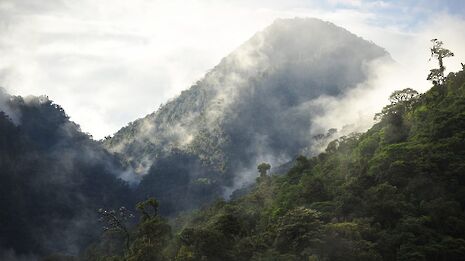Living on Planet Earth
Through technical innovation and David Attenborough’s steady hand, Planet Earth II offers us a glimpse of earthly majesty and a cautionary message for our future

Last Sunday, the final instalment of David Attenborough’s latest documentary series aired on BBC One. Planet Earth II, released 10 years after the original Planet Earth, sparkles as a jewel in the crown of an incomparable 60-year career – a career of discovery, insight and profound communication about the world in which we, and many species, live.
Attenborough, from a hot air balloon two miles above the earth’s surface, introduced the series with these words: “it’s impossible not to be impressed by the sheer grandeur and splendour and power of the natural world,” particularly as today “we can now show life on our planet in entirely new ways.”
Attenborough here alludes to new filming technologies for capturing the natural world. Enabled by such technologies, we journey to islands, mountains, deserts, jungles, grasslands and cities. We are amazed by what we see; our hearts are broken over the plight of brave penguins, the tale of fighting snow leopards, and Hawksbill turtles confused to their peril by the lights of our beachside dwellings.
Each step of the way has been brought to us by technologies able to reveal in detail the secret life of creatures inhabiting remote parts of the globe. The series was filmed across 117 expeditions comprising a total of 2,089 days, with a camera crew of 42 operators filming in ultra high-definition 4K. Ultra high-definition quadruples the amount of pixels used in HD TV, allowing more detail: clearer, crisper pictures add much to our at-home experience of our planet.
Some specifics of filming are revealed in the ‘Diaries’ segments of each episode: to capture elusive river dolphins, waterproof microphones, cameras, and drones are used. To gain the perspective of diving golden eagles, a cameraman, in tandem with a paragliding expert, ‘flew’ off a mountain. Leopards on the outskirts of Mumbai were filmed using the latest thermal technology, one leopard breathtakingly coming to within three metres of where a cameraman was concealed.
“These moments of innovation, daring, and adventure are woven beautifully together to form a rich tapestry of the wonder, complexity and mystery of our world”
Planet Earth II was no easy task, yet these moments of innovation, daring, and adventure are woven beautifully together to form a rich tapestry of the wonder, complexity and mystery of our world. We sit and gaze at our screens; the planet lights up our faces; our eyes are opened to places unimaginable.
It’s the wonder of our world: starlings thrum over Rome with startling mystery, and lizards escape snakes’ stranglehold in scenes of more tension than Indiana Jones. We sit comfortable and content to drink it all in. Could the wild nature of this earth be brought any closer?
As if in answer to this question, Attenborough finishes the series with these words: “it’s surely our responsibility to do everything within our power to create a planet which provides not just a home for us but for all life on Earth.” To strengthen rather than to destroy the connection between nature and man is our call and our responsibility, and it should be our joy – what beauty could abound when we work towards this end?
Perhaps the heartwarming headlines after the final episode – the episode of the confused turtles – provide us with an image and encouragement of this envisioned harmony: every lost turtle was returned to the sea by the Barbados Sea Turtle Project and the crew of Planet Earth II
 News / Clare Hall spent over £500k opposing busway 24 December 2025
News / Clare Hall spent over £500k opposing busway 24 December 2025 Comment / The ‘class’ of Cambridge24 December 2025
Comment / The ‘class’ of Cambridge24 December 2025 News / Caius mourns its tree-mendous loss23 December 2025
News / Caius mourns its tree-mendous loss23 December 2025 News / Girton JCR publishes open letter expressing solidarity with Palestine25 December 2025
News / Girton JCR publishes open letter expressing solidarity with Palestine25 December 2025 Comment / Yes, I’m brown – but I have more important things to say22 December 2025
Comment / Yes, I’m brown – but I have more important things to say22 December 2025









